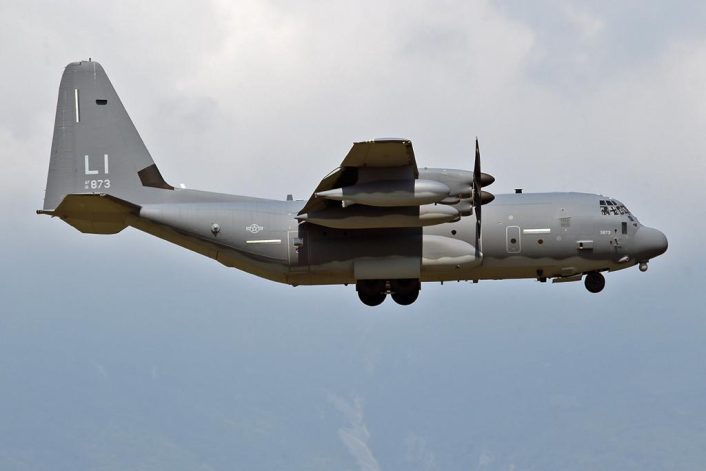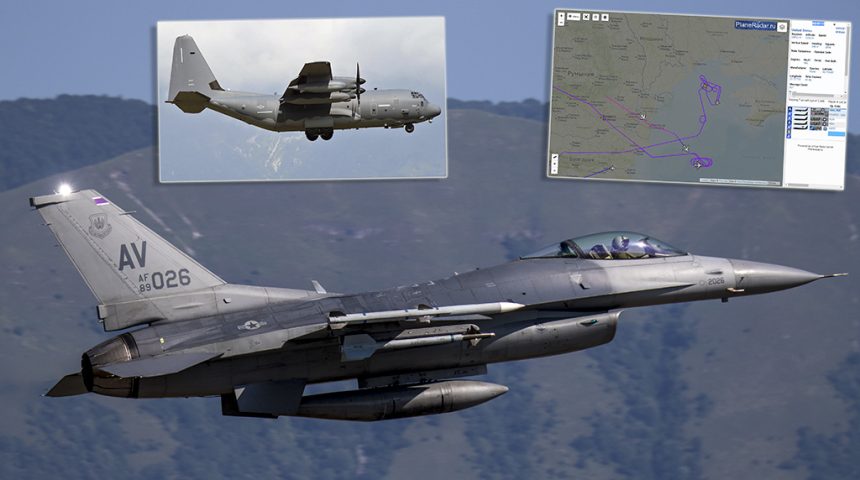F-16s from Aviano AB conducted training scenarios utilizing Joint Air-to-Surface Missile (JASSM) cruise missile tactics during latest Black Sea drills.
An interesting exercise was carried out in international airspace over the Black Sea, on July 22, 2020. Designed “to train U.S. forces to integrate, operate and communicate while executing all domain operations” the “all domain mission” was led by the U.S. Forces in Europe and involved assets from U.S. Naval Forces Europe, U.S. Special Operations Command Europe, and U.S. Space Command.
Among the assets taking part in the operation, there were U.S. Air Force F-16Cs from the 31st Fighter Wing, based at Aviano Air Base, Italy; KC-135 Stratotankers belonging to the 100th Aerial Refueling Wing, from RAF Mildenhall, UK; MQ-9 Reapers belonging to the 52nd Expeditionary Operations Group Detachment 2, Miroslawiec Air Base, Poland. U.S. Naval Forces Europe and U.S. 6th Fleet integrated the USS Porter (DDG 78), currently operating in the Black Sea for Exercise Sea Breeze, and Patrol Squadron (VP-4) P-8 Poseidon from CTF-67.
Interestingly, the mission saw the Aviano F-16s involved in training scenarios utilizing Joint Air-to-Surface Missile (JASSM) cruise missile tactics. The AGM-158 JASSM (with a range in excess of 200 nautical miles) and its extended-range version, the AGM-158B Joint Air-to-Surface Standoff Missile – Extended Range (JASSM-ER) with a standoff distance of over 500 nautical miles, are GPS-guided radar-evading cruise missiles with 2,250-lbs penetrator/blast fragmentation warhead. The JASSM cruise missile employs precision routing and guidance in adverse weather, day or night, using an infrared seeker in addition to the anti-jam GPS to find and destroy high-value, well-defended targets. “Training to this capability enhances Air Force readiness and deterrence capabilities,” says the official U.S. Air Forces in Europe and Africa release.
Noteworthy, this is the second mission to the Black Sea region in the last few months to involve the simulated use of a standoff weapon: as we reported in details here, on May 29, 2020, two U.S. Air Force B-1B Lancers from the 28th Bomb Wing, based at Ellsworth Air Force Base, performed a Bomber Task Force Europe mission over Eastern Europe, flying along the way with Polish F-16s and MiG-29s, Romanian F-16s and MiG-21s, Ukrainian Su-27s and MiG-29s and were also intercepted by Russian Su-27s over the Black Sea. The focus of that mission was on the training on the Long Range Anti-Ship Missile capability. Based on the AGM-158B JASSM-ER, the AGM-158C LRASM is the new stealthy anti-ship cruise missile developed by DARPA (Defense Advanced Research Projects Agency) for the U.S. Air Force and U.S. Navy already integrated on the B-1B Lancer and F/A-18E/F Super Hornet.
Back to the Jul. 22 mission, U.S. Air Force Intelligence, Reconnaissance and Surveillance assets integrated into the 20th iteration of Exercise Sea Breeze, an annual multinational exercise in the Black Sea co-led by the U.S. and Ukraine while U.S. Special Operations Command Europe integrated MC-130J Commando II aircraft from the 352nd Special Operations Wing, RAF Mildenhall, UK, within the training scenario to exercise special operations forces insertion capabilities that enable all-domain operations. The USAFE-AFAFRICA release does not mention them, but the Sea Breeze exercise also saw the involvement of two HC-130J Combat King II, whose role is to rapidly deploy to execute combatant commander directed recovery operations to austere airfields and denied territory for expeditionary, all weather personnel recovery operations to include airdrop, airland, helicopter air-to-air refueling, and forward area ground refueling missions. The two Combat King IIs, 16-5873/LI of the 102nd RQS/106th RQW (New York ANG) based at Westhampton Beach/The Francis S. Gabreski ANGB (NY, Long Island) and 14-5864 of the 130th RQS/129thRQW (California ANG) based at Moffett Field (CA), have arrived in Europe, to support Silver Arrow 2020 mission on Jul. 8, 2020. According to USAFE-AFAFRICA, Silver Arrow missions provide an augmenting force to increase tactical airlift capacity to U.S. Air Forces in Europe during the period of highest demand. The program also focuses on U.S. European Command engagements that support NATO.

The two HC-130J redeployed to Aviano AB to take part in the Black Sea exercise on Jul. 21, 2020. On the following day, during the Black Sea exercise, at least one of them (14-5864) using callsign “JUNO 22” could be tracked online by means of its Mode-S/ADS-B transponder, along with many other participants (beware, the below tweet says JUNO 22 was an MC-130J but it was the HC-130J from Aviano):
Update
USAF MC130j Commando II AE4E1D over the Black Sea
USAF MC130j Commando II JUNO22 en route to the Black Sea pic.twitter.com/eMLW5i2zGf
— Manu Gómez (@GDarkconrad) July 22, 2020
Tanker support, NATO E-3 and U.S. Navy P-8 Poseidon could be tracked as well:
— Manu Gómez (@GDarkconrad) July 22, 2020
“Conducting operations in the Black Sea ensures stability throughout the region. Our combined presence strengthens relationships with our allies and partners while sending a message to any adversary that we are committed to collective defense and ready to respond in a complex security environment,” said Gen. Jeff Harrigian, U.S. Air Forces in Europe-Air Forces Africa commander in the public release, a statement that highlight the growing importance of the region for the U.S. Air Force and NATO.
U.S. and NATO activity in the area almost often causes Russian Su-27s and Su-30SMs of the Southern Military District to scramble from their bases to intercept and identify the “targets”. For instance, last time the B-1s flew over the Black Sea for their LRASM training, they were escorted by at least one Flanker. A video of the intercept was later released by the Russian MoD.









